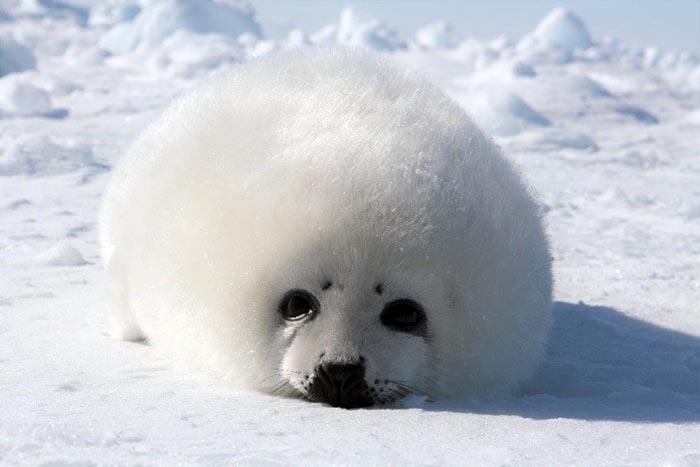Harp seal
Learn about harp seals, including their life cycle, diet, distribution and population trends.
On this page
Life cycle
Harp seals have a lifespan of 25 to 40 years. Males and females are similar in size, averaging 1.6 metres in length and 130 to 150 kg in weight.
Harp seals spend the summer in the Canadian Arctic and Greenland. In the fall, most of these seals migrate south to the Gulf of St. Lawrence or to the waters off southern Labrador and northern Newfoundland.
Females can give birth to 1 pup per year, between late February and mid-March. They require stable ice for giving birth and rearing their young.
Newborn pups weigh around 11 kg and are 80 to 85 cm long. They are nursed for about 12 days and gain over 2.2 kg per day. Once the pups are weaned, the females leave the ice to mate.
Pups begin to moult their white coat at around 10 days old and finish by 3 weeks of age.
Diet
Harp seals eat a varied diet that includes:
- shrimp
- prawns
- crustaceans
- fish such as:
- plaice
- redfish
- sculpin
- capelin
- herring
- Greenland halibut
- Arctic and Atlantic cod
Effects on the ecosystem
We’ve conducted numerous studies on the impacts of seal predation on fish stocks.
For instance, in 2007 to 2008 we evaluated the effects of harp seals on fish stocks and found:
- harp seal predation was not a significant factor in the lack of cod recovery
- there was no evidence that harp seals negatively impacted capelin population
Distribution

Range, migratory pathways and whelping locations of harp seals in the northwest Atlantic. Range is shown in grey and whelping locations are shown in black. The arrows represent migratory pathways
Harp seals are separated into 3 populations, each of which uses a specific pupping site. These are:
- the Northwest Atlantic population, located off eastern Canada and western Greenland
- the Greenland Sea population, which breeds off south east Greenland
- the White Sea/Barents Sea population, which breeds in the White Sea of northern Russia
The Northwest Atlantic population is the largest, and is further into 3 separate herds based on breeding location:
- the Front herd, which breeds off the coast of southern Labrador and northern Newfoundland
- the Gulf herd, which breeds near the Magdalen Islands in the middle of the Gulf of St. Lawrence
- the smaller northern Gulf herd
Population trends
By the 1960s, commercial sealing activities severely depleted the harp seal population to low levels. Today, the harp seal population remains below pre-sealing levels.
We estimate the size of the harp seal population with a model incorporating estimates of:
- pup production
- reproductive rates
- information on removals
The Northwest Atlantic harp seal population is currently healthy and abundant with an estimated population of 7.4 million animals.
- Date modified:

